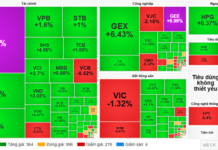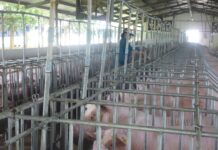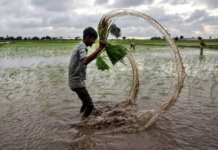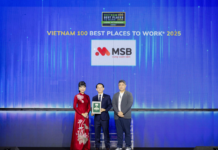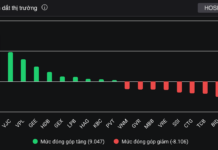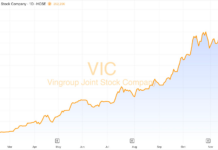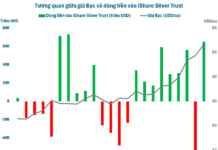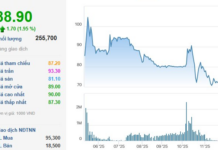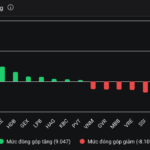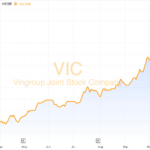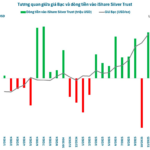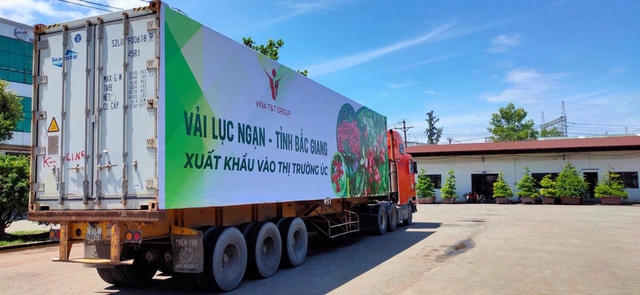
Enhancing logistics connectivity promotes consumption, export of agricultural, forestry, and aquatic products.
The dispatch sent to the Ministers of Agriculture and Rural Development, Industry and Trade, Planning and Investment, Transport, Finance, Foreign Affairs; Provincial People’s Committee Chairpersons, cities directly under the Central Government; Chairperson of the Vietnam Logistics Service Business Association and Associations of agricultural sector.
The dispatch states that the logistics infrastructure system is of great significance in the overall economy and the development of agriculture and rural areas in particular. In recent years, the State has invested in developing the logistics system to promote socio-economic development, facilitate people, cooperatives, businesses, connect production with consumption and export of agricultural, forestry, and aquatic products, contribute to ensuring food security, and ensuring quality and safety of food for domestic consumption and export, thus making significant contributions to Vietnam’s socio-economic development for many years. However, compared to current agricultural production capacity and potential, the advantage of agriculture, the logistics system remains a bottleneck in connecting production and bringing agricultural products to the domestic and international markets in general and neighboring countries’ markets such as China in particular. Traditional transportation methods by road, sea, and air are still not truly effective, and the methods of consumption through e-commerce are still lacking and limited, leading to high logistics costs and reduced competitiveness of Vietnamese agricultural products. In the current context and the next few years with many unstable factors, intertwined opportunities and challenges, completing the logistics infrastructure system to serve production, consumption in the domestic and export markets is extremely important and needs to be identified as a focal task in the development of agriculture and rural areas.
To quickly complete the logistics system to connect and produce agricultural products, better serve the development of agriculture and rural areas in the new situation, the Prime Minister requires the Ministers of Agriculture and Rural Development, Industry and Trade, Planning and Investment, Transport, Finance, Foreign Affairs; Provincial People’s Committee Chairpersons, cities directly under the Central Government; Vietnam Logistics Service Business Association and Associations of agricultural sector to urgently implement the following tasks:
1. Ministry of Agriculture and Rural Development
a) Urgently complete the submission for the Prime Minister’s consideration and approval of the “Development of the logistics service system to enhance the quality and competitive capacity of Vietnamese agricultural products by 2030 with a vision to 2050” project to serve as a basis for organizing and implementing tasks and solutions to develop the logistics system for agricultural products to meet current and long-term practical requirements.
b) Coordinate with localities to review and supplement the planning of agricultural product logistics service centers.
c) Lead and coordinate with the Ministry of Industry and Trade to organize training to enhance knowledge and capacity in logistics, supply chains in general, and agricultural product logistics chains in particular for central and local management officials, businesses, and cooperatives operating in the agricultural sector.
d) Lead and coordinate with the Ministry of Industry and Trade, Ministry of Foreign Affairs to make specific the contents of the Vietnam-China Joint Statement and cooperation documents signed on agricultural cooperation, opening up the agricultural market, promoting diversification of traditional distribution channels through wholesale markets, agricultural product logistics service centers between the two countries’ border gates, creating favorable conditions for mainstreaming agricultural trade through e-commerce platforms.
2. Ministry of Industry and Trade
a) Urgently develop the “Vietnam Logistics Service Development Strategy for 2025 – 2035, with a vision to 2045” project and submit it to the Prime Minister for approval.
b) Lead and coordinate with the Ministry of Agriculture and Rural Development to promote trade promotion activities, connect cooperation in the field of logistics services; support businesses in building an effective agricultural supply chain associated with logistics services for international market entry.
3. Ministry of Planning and Investment
a) Review and allocate balanced funding for developing transportation infrastructure, infrastructure for agricultural logistics centers; guide the use of funds to implement programs, tasks, and projects for developing the agricultural product logistics system effectively and on schedule.
b) Guide enterprises, cooperatives to implement mechanisms, policies related to the development of agricultural product logistics services, invest in building agricultural logistics centers.
c) Advise the Government on policies to attract domestic and foreign investment, encourage economic entities to invest in agricultural product logistics services and logistics infrastructure development.
4. Ministry of Finance
a) Reform procedures, modernize customs procedures to facilitate agricultural trade.
b) Lead and coordinate with the Ministry of Agriculture and Rural Development, Ministry of Industry and Trade, Ministry of Foreign Affairs to discuss with the General Department of China Customs to build and expand the pilot model of smart border gates associated with origin traceability control.
c) Based on the balanced capacity of the central budget, on the proposals of the Ministry of Agriculture and Rural Development and related ministries and sectors, and authorized tasks approved, summarize them in the annual regular expenditure budget of the central budget, submit them to the authorized agencies for examination, and decide on the allocation of funds in the expenditure estimates of ministries and central agencies in accordance with the State Budget Law and guiding documents for implementing programs, tasks, and projects for developing the agricultural product logistics system.
5. Ministry of Transport
a) Prioritize investment in the construction, renovation, and completion of the transportation system linking centers in the agricultural product logistics service system, and support the development of agricultural supply chains by road, waterway, railway, and airway in a convenient and cost-saving manner for domestic transportation costs and logistics costs.
b) Lead and coordinate with the Ministry of Industry and Trade to exchange and work with the Ministry of Transport of China, the National Railway Administration of China, the Civil Aviation Administration of China, and the authorities of provinces adjacent to China on urgent and mid-long-term solutions to optimize costs, transportation procedures, quickly build specialized routes for agricultural product goods at pair border gates (Lang Son, Cao Bang, Lao Cai, Quang Ninh, Lai Chau, Ha Giang) connected with ongoing transport routes to promote and create favorable conditions for local residents, businesses of both countries, and quickly meet the needs of both sides.
c) Focus on organizing solutions to modernize the railway system and improve the capacity of transporting goods by railway to increase the export volume of agricultural products to China. In the immediate future, unify technical standards and connect the railway system at the Lao Cai border gate (Lao Cai province) to facilitate goods transportation by railway at this gateway.
d) In Q1 2024, lead and coordinate with the Ministry of Agriculture and Rural Development, Ministry of Industry and Trade to exchange and work with China to optimize transportation costs, customs procedures, quickly build dedicated routes for agricultural product goods at the adjacent pair of border gates (Lang Son, Cao Bang, Lao Cai, Quang Ninh, Lai Chau, Ha Giang) with connecting ongoing transport routes to promote and create favorable conditions for local residents, businesses of both countries, and quickly meet the needs of both sides.
6. Provinces and cities directly under the Central Government
a) Review, adjust, supplement the planning, and restructure the production of agricultural, forestry, and aquatic products in the locality associated with the development of infrastructure and agricultural product logistics services and stipulate the operation model of agricultural product logistics service centers.
b) Coordinate with the Ministry of Agriculture and Rural Development to review and supplement proposals to approve competent agencies for agricultural product logistics service centers; support site clearance and essential infrastructure for the construction of agricultural product logistics centers.
c) Establish mechanisms and policies under their authority to encourage and attract enterprises, organizations, and individuals with capacity to invest in building, managing, and operating agricultural product logistics centers in the locality.
d) Establish commodity supply chains in major raw material areas and reorganize production according to the cooperative model, cooperative linking with businesses to supply quality, safe, and sustainable agricultural products through the agricultural product logistics service system.
7. Vietnam Logistics Service Business Association and Associations of agricultural sector
a) Establish linkages and cooperation to establish agricultural product logistics chains, apply technology, digital transformation, and business model innovation to reduce logistics costs, increase the value of goods, and promote exports.
b) Mobilize and encourage members to implement agricultural supply chains and tasks and solutions for developing the agricultural product logistics system from raw material areas to the consumption market.

